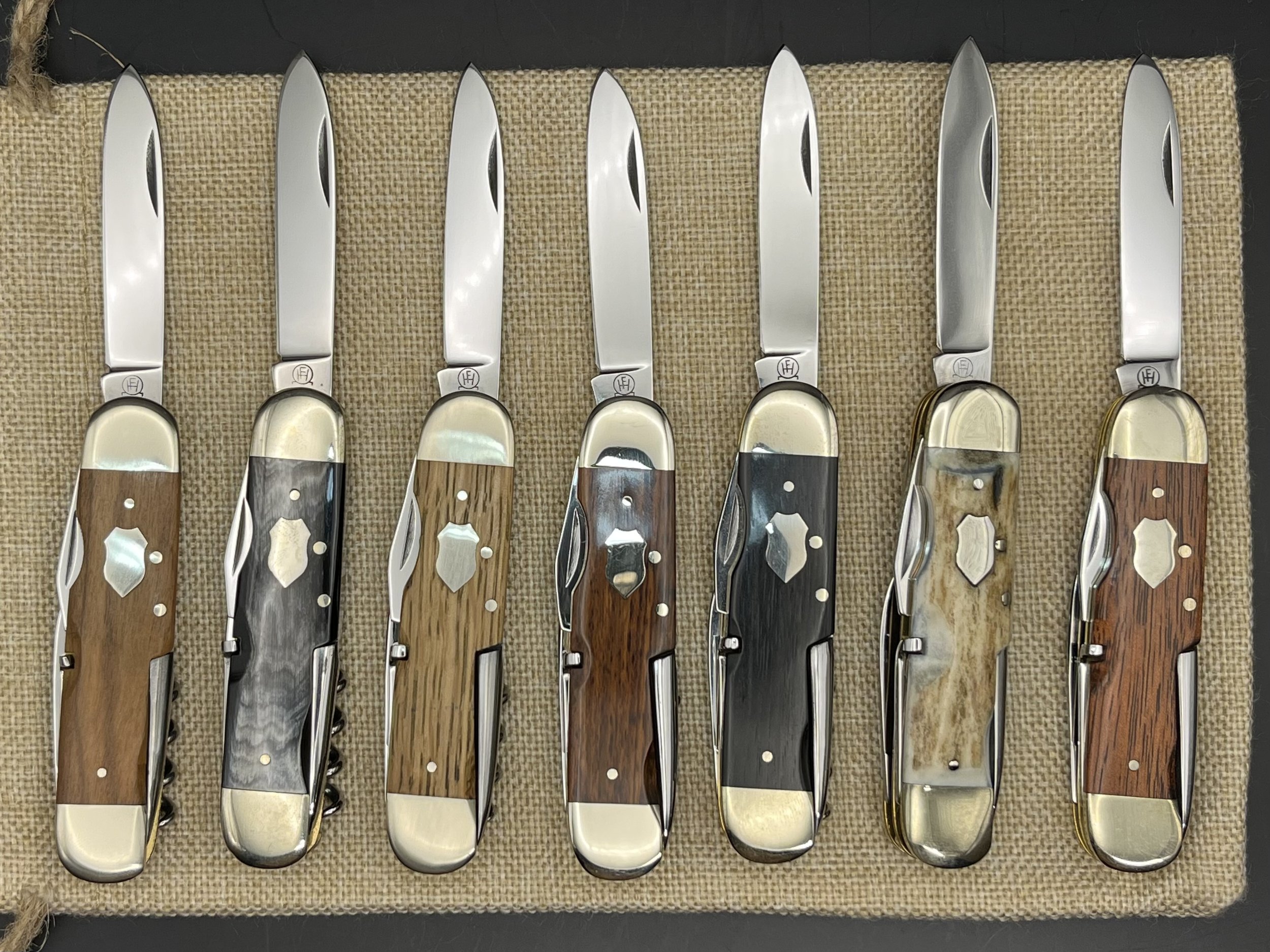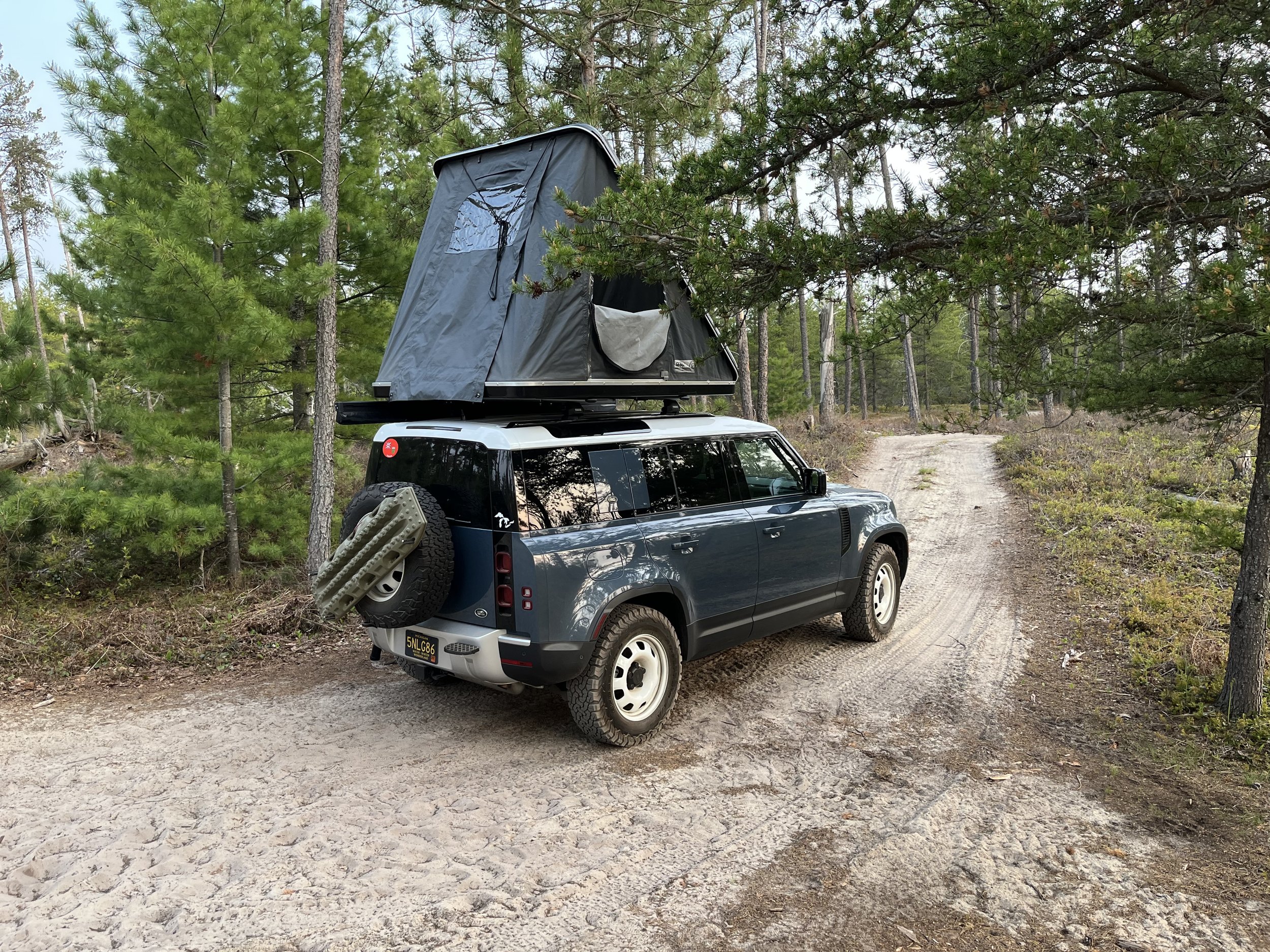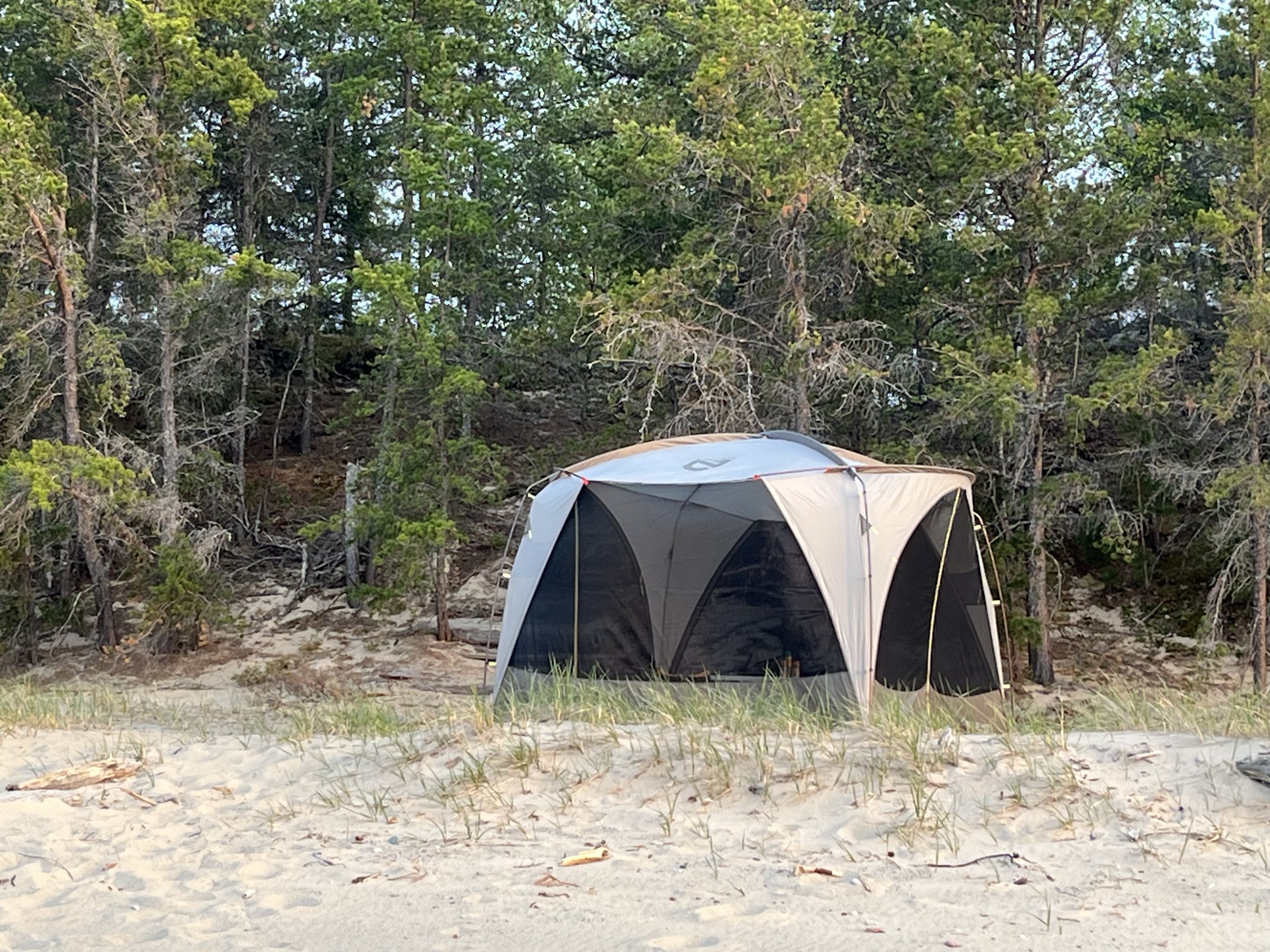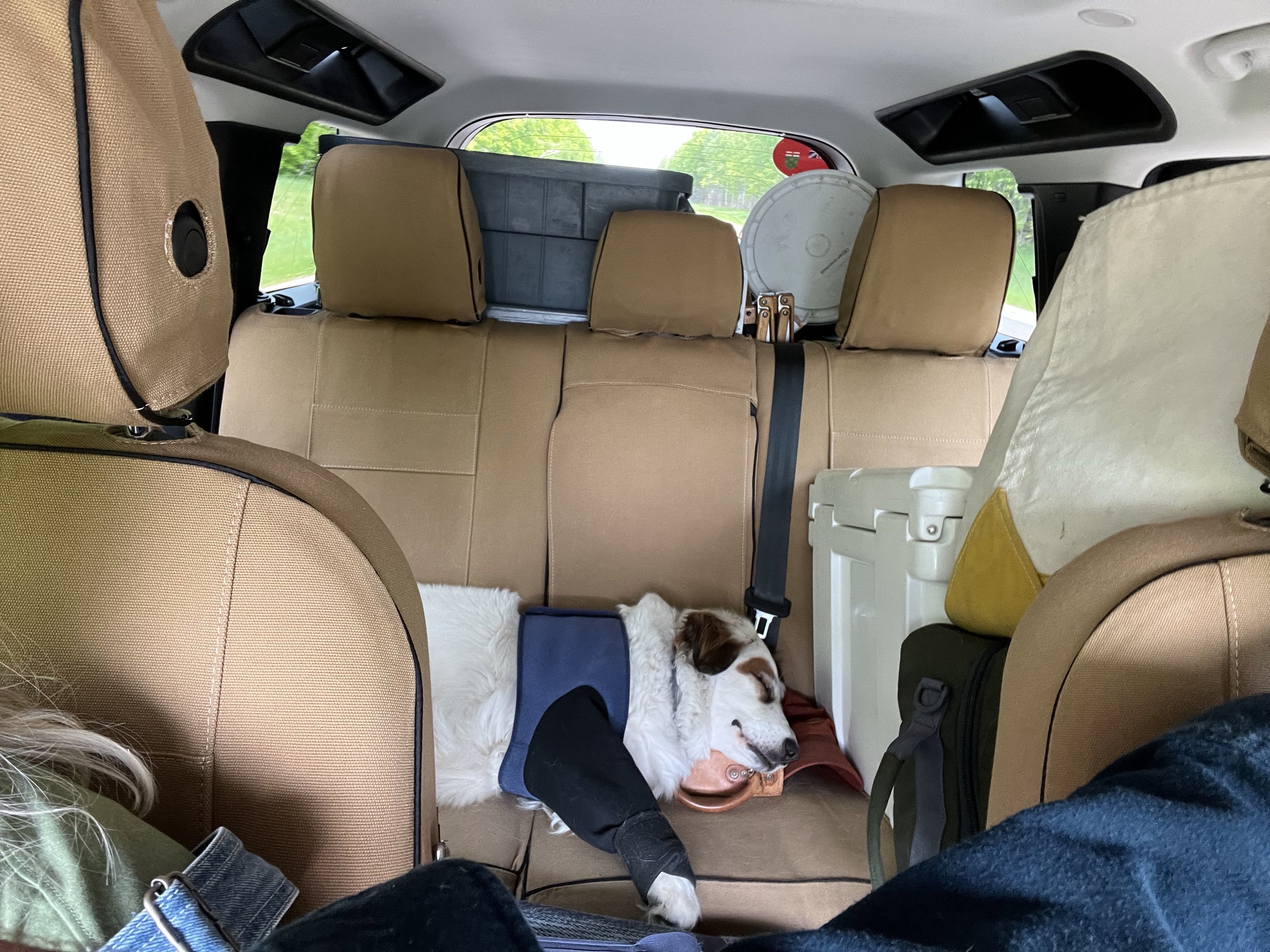Paired for (Mis)Adventure: Omega Planet Ocean 2209.50 and Fr. Hartkopf 527 Militärmesser.
Myron Erickson
Paired for Adventure.
A few summers ago, I wrote a Paired for Adventure piece around my Case 6445R scout/utility knife and my Omega SeaMaster 300 ref 165.024 watch. My thinking was that both these tools hailed from the same period of time — the late 1960’s — and both might have appealed to the same type of person doing the same kind of travel. Neither was considered expensive or exotic in 1967, but neither were they the cheapest way to get the job done in those days. They definitely appealed to a person of certain utilitarian tastes and sensibilities, but also to the person who recognized the quality and longevity that comes with buying the better tool.
The first Paired for Adventure set.
I thought it might be fun to repeat the experience, but this time with an Omega Planet Ocean ref 2209.50 and a Friedrich Hartkopf Model 527 “militärmesser” camp knife. Both of these tools are of modern manufacture, unlike the Case and the Omega from my earlier article, which were both original pieces hailing from the late 1960’s. But modern though they may be, the PO and Model 527 featured here are also both of designs that look back to their predecessors in their own ways.
And so I set about planning a weeklong wander through Michigan’s Upper Peninsula, with the usual pursuits of swimming, beering, birding, outdoor cooking, and relaxing. But the best laid plans, as Robert Burns reminds us, often turn out otherwise.
Ready for anything, the Omega Planet Ocean and Fr. Hartkopf militärmesser.
The Planet Ocean.
I had owned a PO before, a reference 2901.50, which I featured in a head-to-head comparison with the Hamilton Khaki Scuba, a brand new watch that Hamilton had just released in 2017. I loved that PO, but stubbornly resisted wearing it on a bracelet, which is a little like accepting a guest slot in a Formula 1 race and showing up in your VW GTI.
I spurned most bracelets in those days, but have come around to wearing my dive watches on steel since then. That said, if you are used to a modern bracelet from the likes of Tudor, Rolex, or Omega, then you will find the first-gen PO bracelet something of a chunky commitment. But it is comfortable and non-hair-pulling, and its unique, laterally curved links do give the watch a certain wrist presence. Not like an Invicta wrist presence, you understand, but you will feel more like Daniel Craig wearing this watch than you will with a modern Black Bay 58, Explorer, or Heritage SeaMaster 300.
The Planet Ocean ref 2209.50.
There are two great articles that summarize the history and evolution of the Planet Ocean family. For a brief primer, I recommend the article from Fratello; readers looking for more detail might enjoy the deeper dive found on A Blog To Watch. But if I had to boil it down to its bare essence (i.e., your spouse asks you how this watch is different than your other watches), I’d say every enthusiast should own a first-gen PO because it is a serious tool watch without any luxury pretensions, not a luxury watch asserting tool watch pretensions. It is, after all, the direct descendant of the original SeaMaster 300. I would then add that the overall proportions of the 42 mm references are perfect, and that its hippocampus caseback is the coolest thing ever. And if all of that failed to convince my better half, I’d fall back on “Well, Bond wore one in Casino Royale.”
Image compliments Omega Watch.
I bought my PO second hand with its original box and cards. It came on its original leather/rubber strap, which was in pretty used-up condition, but the seller was a great guy, and the watch itself was in fine shape. I wore it for a few weeks on a strap of my own making, long enough to remember why these first-gen PO’s are such great watches, and also long enough to become unhappy with its timekeeping. And then, in a sudden fit of in-for-a-penny-in-for-a-pound, decided to send it to my friend Jorge at Montoya Watch Service for a full service, date wheel upgrade (from C-suffix to D-suffix), and a brand new bracelet. It is now essentially my dream PO, tastefully modified and upgraded, and keeping perfect time.
D-suffix date wheel and sublime caseback on the PO. It’s the little things.
The Hartkopf 527 Militärmesser.
Friedrich Hartkopf is a Solingen-based cutler that has been producing top quality pocket knives since 1890. Their website is in German, and not made for retail sales. If you want to buy a Fr. Hartkopf product, your best bet is a German retailer, although be advised that shipping costs to the US are brutal. These knives are hand built, and of Old World quality. You cannot expect the modern precision and uniformity that you’ll find on any Victorinox product today, but your Fr. Hartkopf pocket knife will have much more personality, warmth, and charm than your brand new SAK.
The Fr. Hartkopf Model 527 Militärmesser.
Fr. Hartkopf built the Model 527 for a few years in the 2010’s, producing the knife in a variety of scale materials. It is a classic 6-blade camp knife, ~90 mm in length, much like a Victorinox Spartan. I own it in seven different scale materials, and I know there is at least one that still eludes me and that I’ll probably never own — the pre-CITES ivory model. The Model 527 comes in a very simple cardboard box with no manual, tissue wrapper, or felt case. But Fr. Hartkopf built a limited number of the Model 527 knives in ebony wood scales which it called the militärmesser. It came packaged in a special wooden box with an authenticity zertifikat. The idea here was that the naturally black hardwood scales are evocative of early 20th century soldiers’ knives, like the Victorinox model 1890, and hence the name “militärmesser.”
The Model 527 in (L to R) olive wood, horn, oak, snakewood, ebony, stag, and brazilwood.
The specimen I brought with me on this trip is a user/carrier I bought second hand from a German friend earlier this year, but of course I have a brand new specimen I bought for my collection, a shelf queen, pristine and never carried. If you want a Fr. Hartkopf Model 527, you can still get one in snakewood scales from ScharferLaden.de. If you want the Model 527 militärmesser, you’ll have to scour eBay for one as they have been sold out for some time. I wrote to Fr. Hartkopf last year and asked (i.e., begged) if they had any plans to either bring back the Model 527 or produce a 182-pattern humpback scout/camp knife anytime soon. To my amazement Herr Holger Hartkopf, himself, the great grandson of the founder, replied to my email. But to my dismay his answer was no.
Like most typical European 6-blade camp knives, the Model 527 features a blade layer consisting of the main blade and a pen blade, an opener layer with can opener and cap lifter/screwdriver implements, and backside tools consisting of a solid, useful awl and an equally useful corkscrew.
Probably the most noticeably different tool on the Model 527 is the old school side-opening can opener. These went the way of the Dodo after WWII, when the top-opening Mirando style can opener was patented and pretty much took over the pocketknife world. Confession: I have never actually used a side-opening scythe-style can opener, although I probably own at least 100 pocket knives equipped with this implement. My Paired for Adventure trip would be my first experience with this very old technology.
Not the same: Fr. Hartkopf tang stamp (L) and Hartkopf & Co. “devil guys” tang stamp (R).
For a wonderful tool-by-tool closeup review of the Model 527 militärmesser and the Fr. Hartkopf company, check out Hobie Farmer’s excellent video on the subject. And finally, don’t make the common mistake that a lot of American collectors do and assume that Friedrich Hartkopf is the same cutler as Hartkopf & Co, another Solingen firm that went out of business in 1968. (There were at least a dozen Solingen-based cutlery companies using the name Hartkopf at some point.)
The Preparation.
My PO came back sympathetically serviced and modded in late May, so I had the opportunity to wear it for a week or so while we prepared for the trip. I don’t baby any of my watches, although for things that constitute silly, just-asking-for-it risk, I will take a watch off and put it in my pocket.
Simple chores in preparation.
I spent the weekend preparing the Defender and putting together our camping rig. For this trip, I wanted to improvise a quick & dirty way to carry my recovery/leveling boards on the Defender’s spare wheel. It felt a bit risky, given the PO’s profile, but reasonable mindfulness proved sufficient to avoid any damage to the watch. The 527 came in handy for one little task, which was securing the plastic covers on my Thule bar mounts. It then went back into my pocket until happy hour, where the old style can opener proved useful undoing the wire cage on a bottle of bubbly.
Mounting the AutoHome on the Defender, and celebrating in style.
On the first Sunday in June, we packed up the Defender and headed north. Our plan was to stay one night at the family cottage in northern lower Michigan, then get an early start for the Mackinac Bridge Monday morning. With all this preparation, and two superior tools to handle any camp chore and timekeeping needs, what could possibly go wrong? Other than the consequences of willfully ignoring my own Michigan Camping Maxim: Never After Memorial Day or Before the 4th of July.
Packed and ready.
The Journey.
One of my favorite things in the universe of things is the Mackinac Bridge. Crossing it offers amazing views of the Straits of Mackinac and makes you proud to be a Michigander. It is an engineering marvel that stands as testament to human ingenuity. It transports me emotionally to adventure mode, when I forget about things at home and just look forward to exploring and enjoying.
Once across the Mighty Mac, we immediately turned west on US-2, which hugs the Lake Michigan shore at its most northern point and offers its own amazing views of the lake. If you’re curious about a road trip along US-2 for yourself, I found a great guide here. It was along this stretch that we encountered the first sign that I may have ignored my Michigan Camping Maxim to my own peril: millions upon millions of lake flies. I saw the clouds from a distance, and when we hit them, it was like driving through a light hail storm as you could hear the collisions with the car.
Clouds of lake flies, doing their thing. (file photo compliments @blake_key)
Lake flies themselves are harmless to us. Although they look a little like mosquitoes, they don’t bite or sting and have no interest in us. They occupy an important strand of the food web, feeding innumerable species of fish, birds, and bats. They can be an annoyance, if you find yourself in their midst while they are swarming during mating season, but nothing even close to the panic that a super-hatch of mosquitoes, black flies, or deer flies can set off.
We got through the lake fly swarm and headed north to Grand Marais, a lovely little town at the eastern end of the Pictured Rocks National Lakeshore. Grand Marais is a great place to stop for ice, gas, and beer before heading off into the wilderness to camp somewhere on the shore of Lake Superior. It was then that I saw the toll we had taken on the lake flies.
The front of the AutoHome covered in lake flies.
Every vertical surface, and there are lots of vertical surfaces on a Land Rover, was covered with zillions of tiny corpses, the bodies of lake flies smashed flat in an instant as we drove through their orgiastic clouds. I cleaned the windshield, which had become almost impossible to see through, we iced down our beer, and took off.
The Campsite.
Our moods were buoyant, as we knew we were close to our favorite Lake Superior camping spot, and I was guessing it would be unoccupied on a Monday. And it did prove to be unoccupied, at least by people. I found just the right spot to locate the Defender, where it was perfectly level and flat in both dimensions (important when you are sleeping on the roof), and felt luckier still. I vaguely recall noticing a few mosquitoes gathering around the windshield, attracted to the heat and carbon dioxide that come off of a car.
Our campsite.
Anxious for a cold beer and an even colder swim, I jumped out of the car and accessed the rear. It was then that the full horror of our situation broke upon me, like the killer waves that capsized the Edmund Fitzgerald not far from here. I realized we were in the middle of a very fresh super-hatch of mosquitoes. Within seconds, there were hundreds of them all over me, and now that the car was open, they were inside as well. I keep my DEET handy, so I quickly sprayed myself down and closed the car up. Back inside, we pondered our options and decided to tough it out. As hardy Michiganders and experienced northern travelers, we had survived our fair share of bugs. How bad could this be?
I had brought a brand new bug shelter, the brilliant Nemo Victory, so we quickly schlepped it down to the beach from the campsite and set it up a few feet from the water, figuring the bugs wouldn’t be nearly as bad there as they were in the woods of the campsite. This turned out to be wrong, and in fact, the mosquitoes not only followed us to the beach, but were joined by their competition, the dreaded stable fly, scourge of beaches everywhere.
The Nemo Victory bug shelter.
With our Nemo shelter up, we sat down to try to gather our wits. I made a mad dash back to the car for our table and chairs, and some food and beer. Covered in sweat and DEET, and driven to near madness by the bugs, I braved a very brief dip in the chilly water of Lake Superior, which helped sooth my frazzled nerves and clear my thoughts. It was now nearly 8 pm.
Juniper, enjoying the bug-free space.
We stayed in the shelter until sunset, when we made the decision to collapse it but leave it in place so we could use it again tomorrow. I put our flattened table on top of it, and weighted that down with rocks. We climbed the small dune back to the car, while the mosquito-induced madness again set in. We hastily brushed our teeth, loaded Juniper the Singing Wonder Dog into the AutoHome, and climbed in behind her, quickly zipping ourselves in.
Running out of time, and daylight.
My first night of any outing is usually pretty poor sleep-wise, and this was no exception. I dozed very lightly, wakened now and then by the high pitched zzzzz of a mosquito in my ear. Around midnight, Juni started to growl at something in the darkness, but at what I couldn’t tell. She settled down, but took to growling toward some unseen foe a few times again over the next few hours. We got through the night, one of the most restless I’ve ever had camping, the one plus being the excellent lume on my Planet Ocean.
View from inside the tent.
Time to Leave. Well, Maybe.
At 6 AM, there was enough daylight to see that the screens of the tent were covered in mosquitoes. Hundreds, perhaps thousands, of mosquitoes, just waiting for us. We pondered possible strategies for making coffee and breakfast and finally decided that our best option was to bail. Now I was really wishing I’d packed up the Nemo shelter and brought it up to the car the prior night. Even covered in DEET, the chore was hellish, as the mosquitoes found every square millimeter that you missed; more than one got in my mouth. Poor Juniper was covered.
Without even taking the time for a morning pee, we threw our stuff in the car haphazardly, folded and fastened the AutoHome closed, and departed, the Defender full of mosquitoes. Our plan was to head back in to Grand Marais to get breakfast and reassess. The two-track road drives parallel to the lake for a hundred yards or so and then turns sharply south, into the woods and a couple miles back to the main road. Within a few seconds of making the turn, I came around a small bend and saw what Juni had been alerting us to in the middle of the night. “Told ya,” I imagined her saying. Stuck in the sand and blocking the road was the unlikeliest of cars, a Prius with a Utah plate, apparently abandoned. From my view inside the Defender, it didn’t look possible to drive around it, which meant that we, too, were stuck.
It doesn’t look that bad from this vantage, but this Prius was stuck but good.
After pondering the Prius for a minute, I decided to get out and confirm that there was no way for me to drive around it. You can imagine how happy I was with the Prius owner. Here I was, with the properly equipped vehicle perfectly suited to the Michigan conditions, forced to leave my car and go back out into Mosquito Hell to investigate a stricken Prius from Utah. If the zzzzz from the mosquitoes hadn’t been so loud I probably could’ve heard the doo-doo-doo-doo Twilight Zone theme.
With no other options, and no other way out, I left the Defender and was immediately swarmed. As I walked up to the front of the Prius, I could see that someone had made a valiant effort. The driver’s side front wheel was completely dug in, and the car was resting on its front bumper, rocker panel, and whatever else is in the front left underside of a Prius. It was well and truly stuck. Rocks and sticks littered the area, the driver’s attempt to fill the hole and drive the car out.
At this moment, the Prius’s door opened and the driver emerged looking completely frazzled and freaked out. As we swatted and swiped, he explained that they’d gotten stuck at around midnight, and that he had worked until 3:30 AM trying to free the Prius, eventually giving up and sleeping the rest of the night in the car. I asked where they were from, thinking surely the car was a rental. The answer, “Utah. We have rocks and desert but nothing like this.”
Don’t leave home without it. Recovery gear in the Defender’s rear stowage cubby.
He asked if I had recovery gear. Of course I did, but it was packed in the stowage cubby of the Defender, under all my camping gear. Which meant I had to unload my entire car to access it. In the middle of Mosquito Hell. On one hour of sleep, with an empty stomach, full bladder, and no coffee.
I hastily emptied the entire contents of the Defender’s rear, making sure to put stuff where I wouldn’t back over it, accessed my recovery gear, and went back to the Prius. I asked my new friend if the Prius had recovery points, thinking the best we might get is the light duty tie-downs Toyota puts on the car to ship it from Japan. He said yes, he knew what to do, and then appeared to wrap my recovery strap around the rear axle/drive unit of the Prius.
Under normal circumstances, we could’ve introduced ourselves, jointly consulted and strategized, and calmly decided on the best solution. We probably could’ve used my recovery boards to drive the car out. But the mosquito situation made this impossible. As I was fastening the strap to the Defender’s front recovery ring, I envisioned the Prius’s entire rear axle assembly ripping out from under it, so I said to my friend, trying but probably failing to not sound peeved, “I want to hear you say you absolve me from all responsibility if we damage your car.” He indicated that he was grateful for any assistance and wouldn’t blame me if things went sideways. Things like his bumper cover. Things like his rear axle.
Post-extraction.
The Defender was already in low range and sand crawl mode, so it didn’t even notice that it was tethered to a 3,000-lb lithium ion battery with room for two. It took only seconds to free the Prius, but now I had to undo the recovery gear and repack my car, while the mosquitoes swarmed me.
I helped my new friend fill in the hole in the sand trap, but he still insisted on backing up a further couple hundred feet to get a good running start. This time he blasted through it and kept on trucking, making it back out to the main road several minutes before I did, where he was waiting for us. I rolled down my window and he thanked us profusely, proffering a folded up dollar bill. I declined, and told him I was just happy to help. He insisted, reached in to place the $50 bill on my dash, and said he hoped we’d buy ourselves a really nice breakfast somewhere. There were numerous smashed mosquitoes on his face, and at least one live one on his forehead, and probably mine too. As my window was rolling up, I said “Welcome to Michigan, the bugs aren’t usually this bad!” He laughed, got in his car, and sped off down the Prius-friendly paved road.
Out of gas for the ride home.
We drove the 200 miles back downstate to the cottage, arriving almost exactly 24 hours after we’d left. I offered my long-suffering spouse a trade — I’ll make martinis if you make y0ur famous camp-style jambalaya. At last the Hartkopf came into its own, the old-school can opener making quick work of a can of tomatoes and the razor sharp blade perfectly peeling the lemon twists for my cocktails.
Hard to get through life without a good camp knife.
A more thorough test of these Paired for Adventure tools will have to wait until after the 4th of July. In the meantime, if y0u have a good story to share about bugs, camping, pocket knives, or SeaMasters I’d love to hear it. Please leave a comment below, and thanks for reading.
























